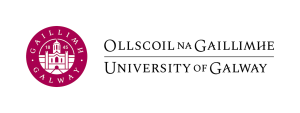The Role of Glycosylation in SARS-CoV-2 Immune Evasion and Stability
Callum Ives shared insights into some of the fascinating research he has been involved in, focusing on the glycosylation of the SARS-CoV-2 spike (S) protein. This protein plays a pivotal role in the virus’s ability to evade the immune system and preserve its structural integrity. Callum is an Assistant Lecturer in Chemistry at Atlantic Technological University in Sligo, having previously worked as a Postdoctoral Researcher at Maynooth University
Title
The Research
This project focuses on the glycosylation of the SARS-CoV-2 spike (S) protein, which plays a critical role in the virus's ability to evade the immune system and maintain structural stability. The study reveals how glycosylation, particularly at the N343 site of the spike receptor binding domain (RBD), impacts viral evolution, immune evasion, and viral fitness. By examining the structure and behavior of the glycan shield across different variants of concern (VoCs), including WHu-1, alpha, beta, delta, and omicron, the researchers provide insights into how mutations in the glycosylation sites influence viral functionality.
This research is pivotal as it sheds light on how structural changes in glycosylation affect the virus's ability to bind to human cell receptors, providing essential knowledge for understanding viral evolution and improving immune response strategies.
Title
The Technology
The team employed advanced molecular dynamics (MD) simulations to explore the structural role of N-glycosylation at N343 in the SARS-CoV-2 spike protein. Over 45 microseconds of cumulative sampling from conventional and enhanced MD simulations were conducted to analyze the conformational changes of the RBD of the spike protein. The research shows how glycosylation at N343 regulates the structure of the RBD and triggers conformational changes when this glycan is lost, particularly affecting the receptor binding motif (RBM).
The computational models used included both classical and enhanced MD simulations, which allowed the team to gain detailed insights into the structural dynamics of the spike protein across various VoCs. High-performance computing (HPC) resources were critical in this work, enabling the processing of large-scale simulations that revealed the glycan’s amphipathic nature and its role in preserving the structural integrity of the RBD. These resources were provided by ICHEC, allowing for the extensive sampling and in-depth analysis required for the project. The work was completed successfully using both Kay and MeluXina.
Title
The Impact
This research has led to a deeper understanding of the molecular and functional dynamics of SARS-CoV-2, particularly how glycosylation affects the virus’s ability to evade immune detection. By identifying structural glycosylation sites that are crucial to the virus’s stability, the team has uncovered potential targets for future treatments and vaccines.
The findings highlight how variations in glycosylation across different VoCs influence viral binding to receptors, which can inform more effective immune surveillance strategies. Moving forward, the research will continue to examine glycosylation's role in viral mutation hotspots, further contributing to the global effort in pandemic preparedness and vaccine development.
Title
Introduction to the Research Team
- Callum M. Ives – Callum obtained a BSc (Hons) in biochemistry from the University of Surrey. During this time, he undertook a professional training year in the lab of Professor Martin Caffrey at Trinity College Dublin, where he conducted structure-function studies of membrane proteins using X-ray crystallography. Following on from this, he obtained a PhD with a focus on computational chemistry and biophysics from the University of Dundee under the supervision of Professor Ulrich Zachariae, where he conducted novel research on the cation selectivity mechanisms of the TRP family of ion channels. In the eLab, his research focused on determining the structure of glycans, and understanding how glycosylation modulates the structure and function of membrane proteins and antibodies. He is currently an Assistant Lecturer in Chemistry at Atlantic Technological University in Sligo.
- Carl A. Fogarty – Carl Fogarty earned a BSc in Chemistry and Statistics from Maynooth University, Beginning In E-lab during his BSc his 4th year project involved iminosuggar derivatives and their 𝛼 ‑ Glucosidase activity. Continuing in the group under the Government of Ireland Postgraduate Scholarship he worked on Characterisation of structure to function relationships in glycans and glycosylated proteins by computer simulation techniques in which he created structural models from oligomannose glycan to the SARS-CoV-2 S protein.
- Aoife M. Harbison – Glycobiology Researcher, with a focus on glycosylation and protein stability.
- Elisa Fadda – has a BSc and MSc in Chemistry from the Università degli Studi di Cagliari. She obtained her Ph.D. in theoretical chemistry at the Université de Montréal in 2004 under the supervision of Prof Dennis R. Salahub. After her Ph.D., she worked as a Postdoctoral Fellow in Molecular Structure and Function at the Hospital for Sick Children (SickKids) Research Institute in Toronto, where she specialised in biophysics and statistical mechanics-based methods in Dr Regis Pomes’ research group. In 2008, Elisa joined Prof Rob Woods’ Computational Glycobiology Laboratory as a Senior Research Scientist in the School of Chemistry at the University of Galway. She started her independent career in 2013 in the Department of Chemistry at Maynooth University and was Associate Professor. In January 2024, Elisa took up a new position in the School of Biological Sciences at the University of Southampton, where she is an Associate Professor in Pharmacology.
To learn more about the team's research, click here.



